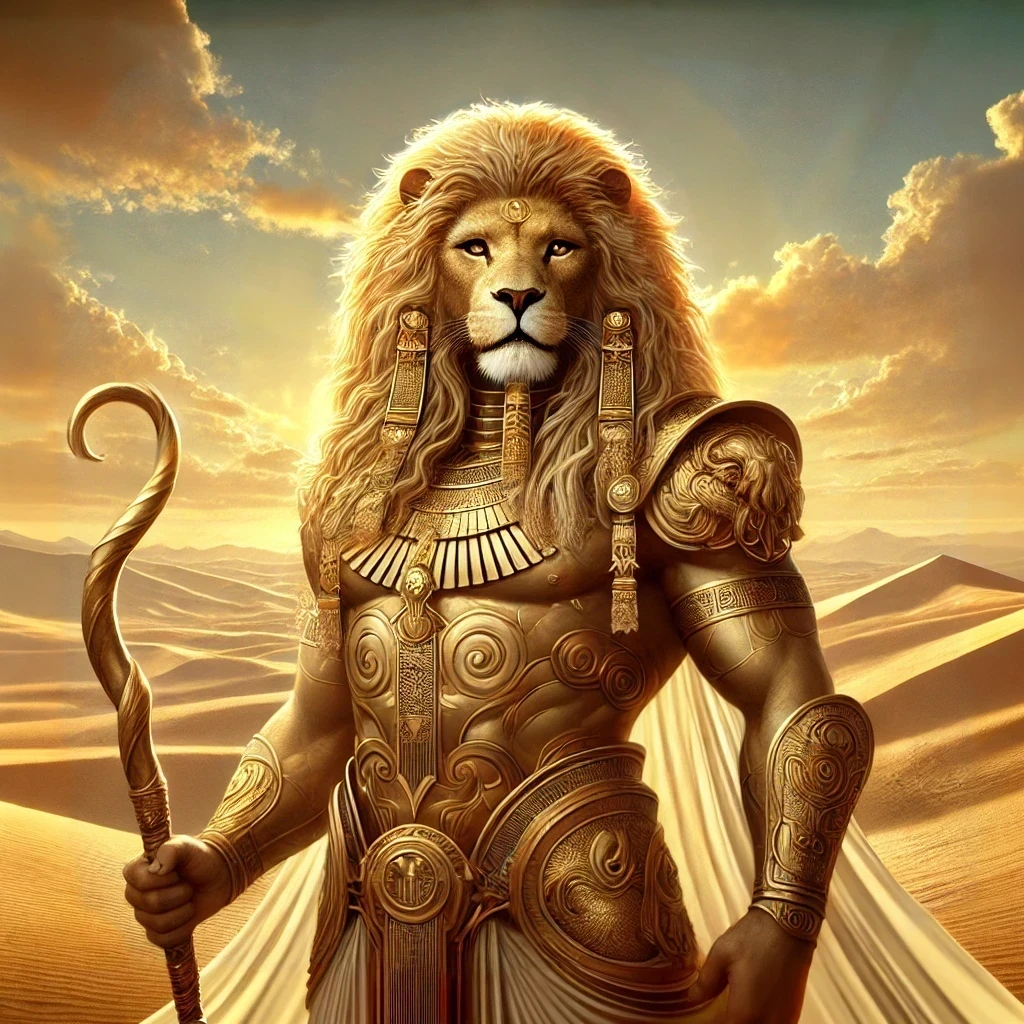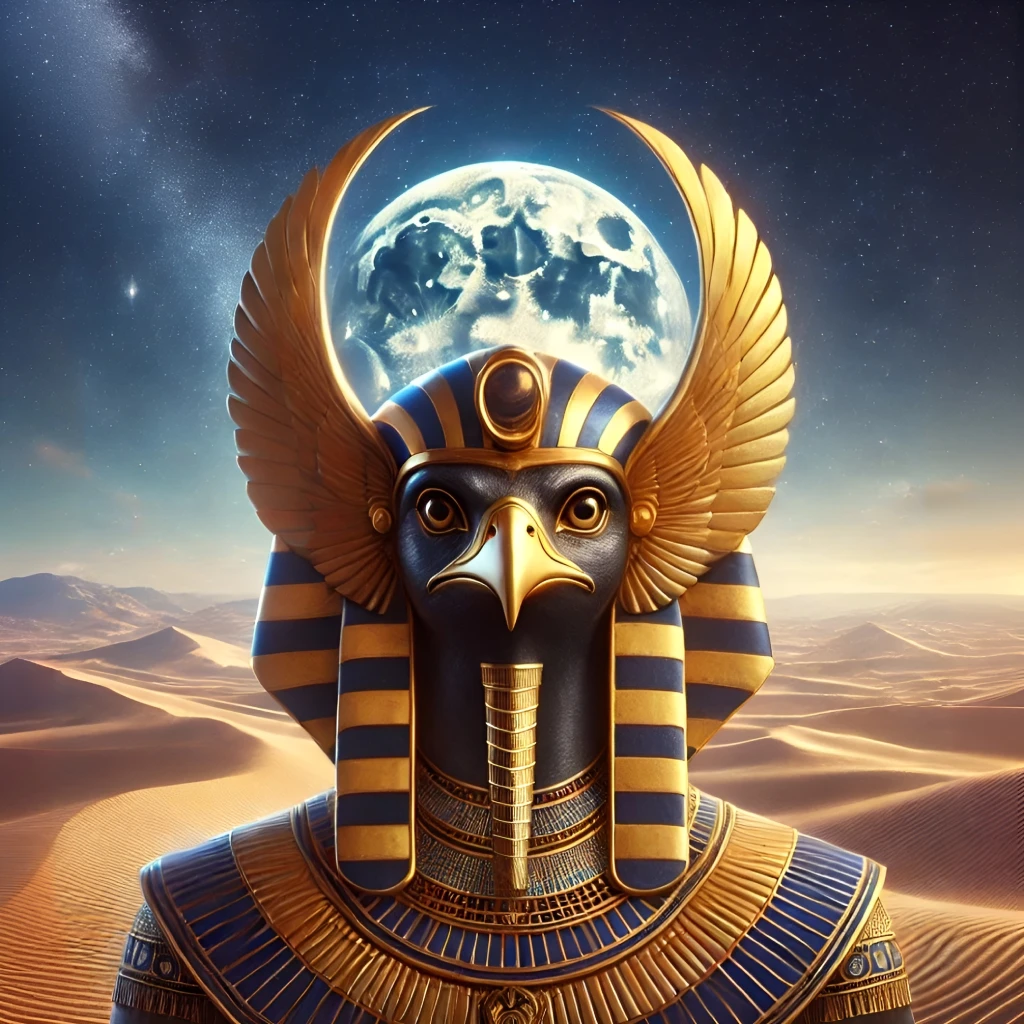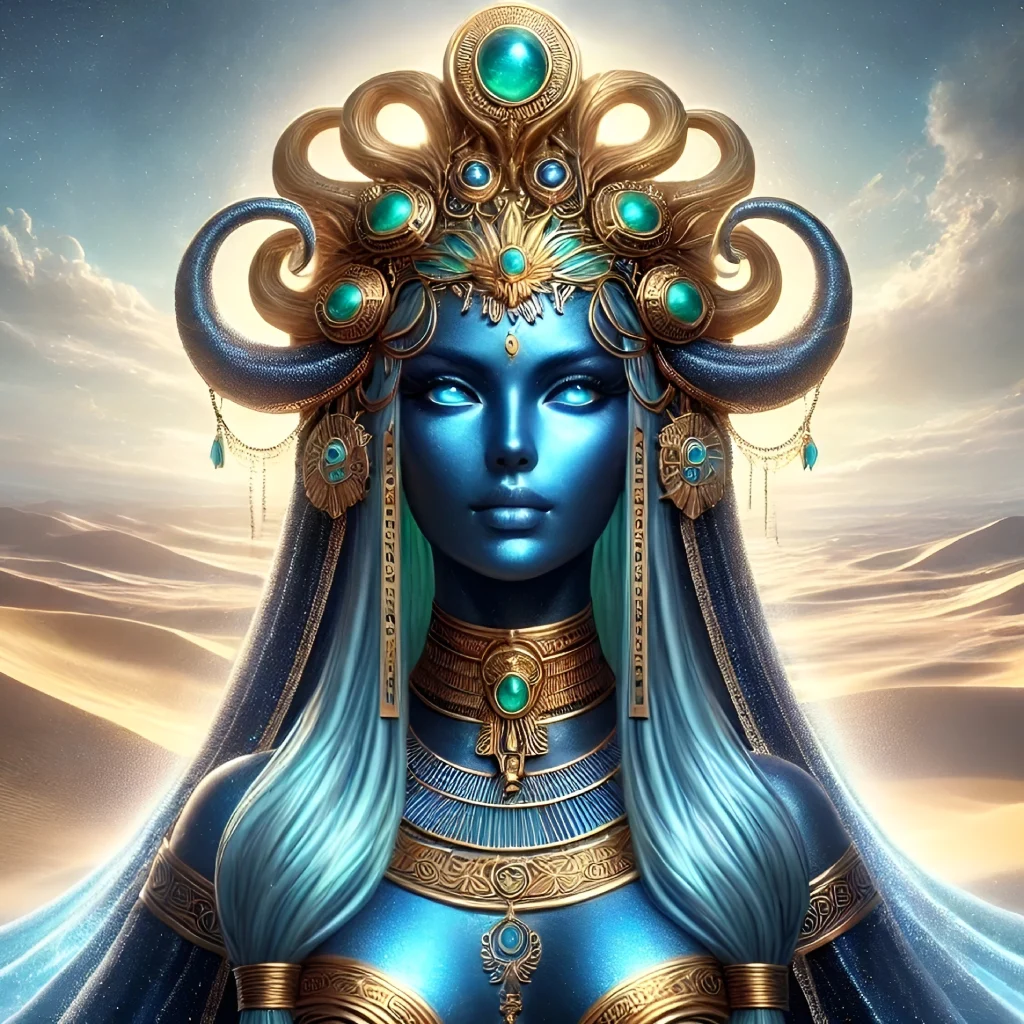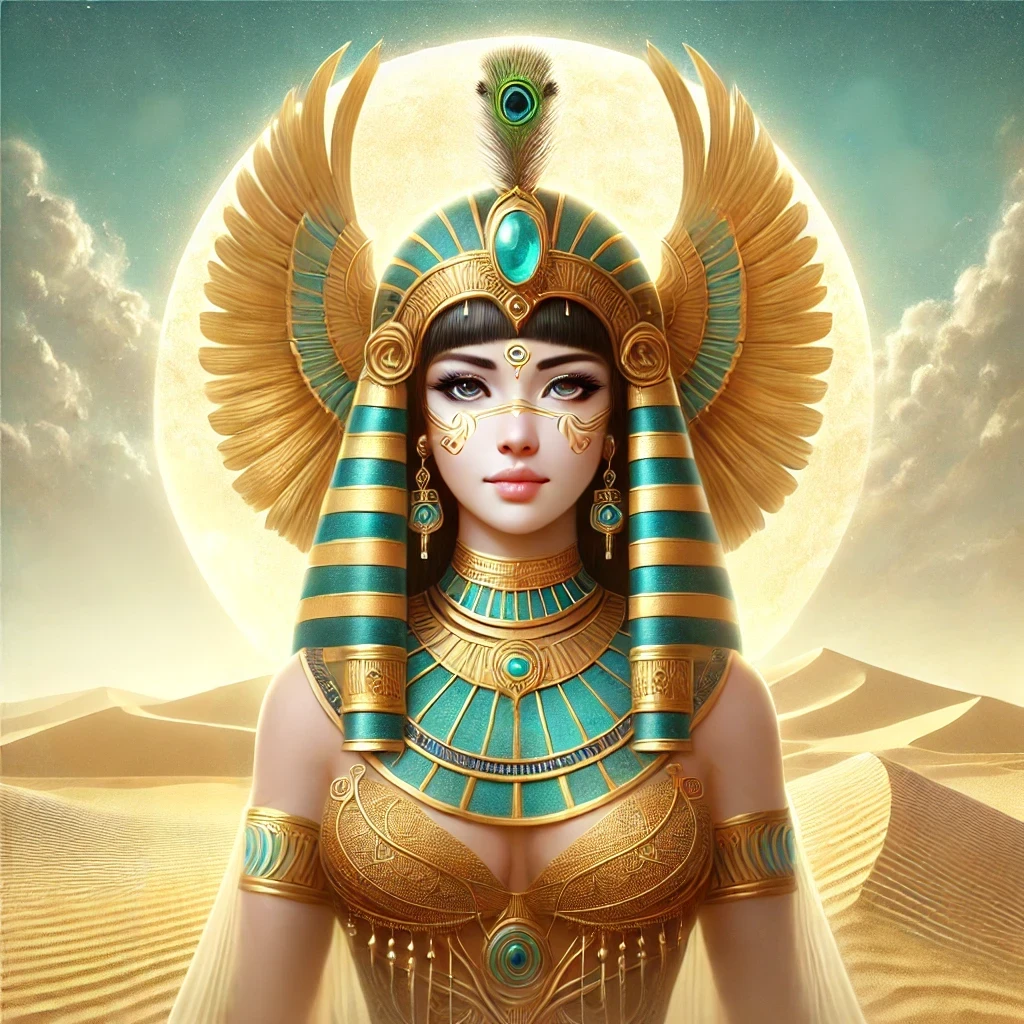Maahes held the dual role of warrior and protector, often associated with the lion’s fierce majesty. Known also as Mihos, Mios, and Maihes, this god bore epithets such as “Lord of the Massacre” and “Wielder of the Knife.” His name likely derives from the Egyptian word “m’hes,” meaning “lion,” a fitting origin for one so deeply linked with ferocity and guardianship. Worshiped prominently during the New Kingdom, he was regarded as both a divine punisher and a guardian of the sacred order.
Origins
Historical Roots
Maahes’s origins lie in the fertile Nile Delta, particularly in regions like Taremu (Leontopolis), known for its veneration of lion deities. His worship emerged as a synthesis of local lion cults and broader national religious practices.
Cultural Integration
He was closely tied to the pantheon of Memphis, the city devoted to Ptah, as well as Thebes, where his role as a protector mirrored the martial deities revered there. His significance grew during the New Kingdom, where depictions of him became more prominent in temple reliefs.
Association with Sekhmet and Bastet
As a lion deity, Maahes was considered the son of Sekhmet, the lioness goddess of war and healing, or Bastet, the goddess of domesticity and joy. This maternal connection enhanced his duality as both a fierce warrior and a nurturer of balance.
Appearance
Iconography in Art
Depictions of Maahes consistently emphasized his leonine traits. He was typically portrayed as a man with the head of a lion, embodying strength and ferocity.
Symbolic Attributes
His head often bore a stylized mane, symbolizing his regal nature. He was frequently depicted holding a knife, emphasizing his role as a protector and enforcer of divine justice.
Variation Across Eras
While earlier representations leaned heavily on his warrior aspect, later depictions softened, showing him seated calmly, symbolizing restrained power and vigilance.
Abilities
Martial Prowess
Maahes most celebrated trait was his unparalleled martial ability. He was believed to protect the pharaoh and temples from both physical and spiritual threats.
Guardian of the Natural Order
As a divine enforcer, he punished those who disrupted Ma’at, the Egyptian concept of cosmic balance. He was seen as a vigilant sentinel, ensuring order and justice.
Control Over Lions
In mythology, lions were under his command, acting as extensions of his will. This ability further solidified his connection to power and dominance.
Myths
Defender of Ra
One myth recounts Maahes’s role as a protector of Ra during his nightly journey through the underworld. The lion-headed god fought off Apophis, the serpent of chaos, ensuring the sun’s renewal each dawn.
Punisher of the Wicked
As a divine judge, the deity was said to hunt down evildoers and punish them. In some tales, he exacted justice with precision, wielding his knife to maintain balance.
Sacred Hunts
Legends also depict him partaking in ritual hunts, symbolic of subduing chaos and asserting divine order.
Symbolism
Associated Animals
The lion, unsurprisingly, was his primary animal symbol. Lions were revered as embodiments of strength, courage, and guardianship.
Sacred Objects
His knife symbolized his role as an executor of divine will, while the sun disk often accompanied his imagery, connecting him to solar deities like Ra.
Plants and Minerals
Lotus flowers, representing rebirth, and gold, symbolizing divine power, were often linked to him in temple offerings.
Relationships
Parental Ties
As the son of Sekhmet or Bastet, Maahes inherited traits from both his divine mothers—warrior strength from Sekhmet and nurturing aspects from Bastet.
Rivals and Allies
He was often depicted alongside other protective deities, such as Anubis and Horus. However, as a protector of Ma’at, his adversaries included entities of chaos, like Apophis.
Role in Royal Court
Pharaohs considered him a patron and protector, frequently invoking his name in times of war or upheaval.
Trivia
- Maahes was venerated in Leontopolis, a city renowned for its lion sanctuary.
- Some texts refer to him as the “Lord of the Slaughter,” highlighting his fearsome reputation.
- Temples dedicated to him often featured lion statues guarding entrances, underscoring his protective role.
- The Greeks associated him with Heracles due to their shared connection with lions.
- Despite his fierce reputation, his worship included acts of nurturing, such as offering milk to lion cubs in his sanctuaries.



